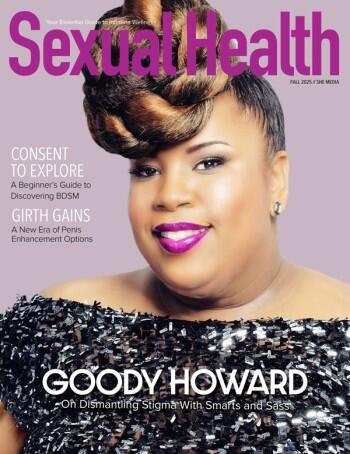Gen Z is breaking the customer funnel, and it’s exactly what we need. In the past, figuring out customers’ purchasing habits, both in-store and digital, was relatively straightforward. But Gen Z’s priorities are completely different from those of their predecessors, and so are their shopping habits. Social media isn’t just where they decide to support a brand or not; it’s where their lives play out. It’s where all social interactions take place, where they learn about the world and where they go for entertainment. Generation Z is forcing us to break the tradition of the customer funnel and get out of our comfort zone by speaking to their core values in innovative ways… but how exactly do we do that?
Corporate Social Responsibility
Although Gen Zers are less accustomed to in-store purchases than millennials and Gen X, event partnerships with local brands can help lure them out of cyberspace and into the real world.
We’re seeing the Greta Thunberg effect everywhere. The majority of Gen Zers list the environment as today’s most crucial issue and want to know that the companies they support are ethical and doing their part to fight climate change. They want to back transparent companies that don’t greenwash or make claims that end up being performative.
Embodying those values is the quickest way to ensure customer trust and loyalty from Gen Z. This can be accomplished through third-party testing or certification, as well as transparency in the manufacturing process. After all, many cheap, shoddily manufactured sex toys end up in landfills after a short time, and the antidote is brands like Love Not War, for whom sustainability isn’t just a brand value; it’s their whole identity.
A Custom-Tailored Experience
Although extensive product research and comparison on marketplaces like Amazon play a major role in determining a purchase for Gen Z, so does personalization through an appealing digital experience. They want a journey designed for them so they can best see how a service or product will fit into their lives. Buying sexual wellness products is a wildly personal experience for different bodies. AI-powered shopping journeys integrating technology like chatbots can help Gen Z, a generation that already has decision fatigue, figure out what product they want.
The Power of Video Platforms
Traditional marketing isn’t enough for Gen Z. Instead of billboards and magazines, dynamic social media platforms are king — namely, video-based ones that are easily digestible. Stories and reels on TikTok and Instagram, as well as YouTube videos, are the primary way that Gen Z de-stresses, so when they’re scrolling and come across an ad, they’re more likely to be tuned in.
A video format offers a more authentic and versatile experience that can be consumed through audio, visuals or a combination of the two. Not only is it more eye-catching than traditional ads, but it’s how Gen Z absorbs and makes sense of the world around them. By focusing on social media-friendly video advertising, we’re speaking their language. Plus, with all the time Gen Z spends on these video-centric social platforms, businesses and agencies have a rich source of insight-packed data that helps us develop more effective targeted campaigns with a focus on customization.
Leveraging Influencer, User-Generated Content Partnerships
Gen Zers aren’t automatically going to invest their trust in your brand, no matter how much you try to be their friend. They’re also not likely to believe celebrities with whom they feel a disconnect. PR and marketing pros can help bridge the gap by taking on more approachable partners who carry weight in the Gen Z community.
This means targeting more micro-influencers and focusing on user-generated content (UGC), which once again circles back to the Gen Z core value of authenticity. In organic marketing, UGC shines a spotlight on the beauty of diversity, featuring a variety of body types, skin tones, ethnicities and races rocking products in their own style. Gen Z is more ethnically and racially diverse than prior generations, so advertising that targets them should reflect this.
Additionally, since education is such an essential part of selling sex toys, influencers and social media users can provide that integral info to their followers. In a world where comprehensive sex ed often isn’t readily available, influencers are leading the sex-ed revolution in an accessible and informative way for their young peers, using their own personal lives to lead by example.
Partnering with these smaller influencers also requires less of a budget than securing a bigger name, a plus for brands, retailers and agencies alike. Instead, that budget can be spread out across multiple micro-influencers and users. Strategic earned or gifted partnerships often don’t entail a fee, allowing for sponsored content that reaches your ideal customer base but doesn’t require paying for ad space. Due to Gen Z’s budget-conscious nature, partnering with micro-influencers for raffles, giveaways, hashtag challenges and personalized discount codes for sex toys can help entice this demographic even more.
Capitalizing on FOMO
Although Gen Zers live a digital-first lifestyle, “IRL” experiences are still important to them, especially when it comes to local brands. An in-person experience is much more exclusive than a virtual one and also offers a chance for sharing photo and video ops on social media, namely through events like pop-ups, early access to sales, meet-and-greets with influencers, or live music. Although Gen Zers are less accustomed to in-store purchases than millennials and Gen X, event partnerships with local brands can help lure them out of cyberspace and into the real world. While social media provides a community, it can also cause users to feel alienated when they process too much of life behind a screen.
Helping Us All Evolve
Earning the trust and loyalty of this generation is no easy task in today’s saturated market. But their radical thinking prevents us from relying on old patterns and encourages us instead to think on our feet in new and innovative ways. Sexual wellness professionals have always been propelled forward by innovation, and Gen Z inspires us to get even more creative in shaping our industry’s future.
Naima Karp is a content writer and PR intern with over a decade of experience in crafting lifestyle, sexual health and wellness content writing for a variety of platforms.








